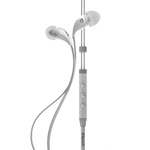According to the IDC (www.idc.com) research group, the overall certified workstation market experienced disappointing growth in the first quarter of 2015 (1Q15) after seven consecutive quarters of strong growth.
Worldwide shipments for the quarter recorded a year-over-year decline of -1.7%, less than forecast projected growth of 2.4%. Overall shipments fell to 838,400 compared to 858,667 in the same quarter a year ago. Emerging markets continued to perform better than developed markets with a quick turnaround in the Middle East and Africa (MEA) region after a decline of -15.2% year-over-year in the fourth quarter of 2014. MEA was the fastest growing region in 1Q15 with 11.0% year-over-year growth and gained global market share of 0.5 points sequentially and 0.3 points year-over-year.
For the first time in five consecutive quarters, the Latin America region was not able to achieve double-digit growth although it did post solid growth of 4.9% year-over-year. With the regional market accounting for 2.6% of the global market, Peru is among the market-driven countries in the region growing significantly at 33.5% year over year and gaining remarkable 2.4 points of share year over year and 5.0 points sequentially.
The Asia/Pacific (excluding Japan) region accounted for 16.9% of global share and was the second fastest growing region with year-over-year growth of 10.3%, its sixth consecutive quarter of double-digit growth. As expected, growth in both China and India slowed year-over-year and China lost 7.1 points of share sequentially.
The rest of the world, including Canada, Central and Eastern Europe, Japan, the United States, and Western Europe, accounted for 77.4% of worldwide shipments and declined -4.6% year over year in 1Q15. Japan declined the most at -16.3% year over year, its third consecutive quarter of double-digit decline.
“For years IT professionals were faced with a choice between high-end PCs or certified workstations with hardware that was optimized for running professional applications in a niche market,” says Ebenezer Obeng-Nyarkoh, senior research analyst, Worldwide Trackers Group. “However, with increasing demand for high performance, graphic capabilities, and greater reliability, we believe ISV-certified workstations are positioned to move into the mainstream.”
For desktop workstations, which includes all-in-ones, blade, rack, and tower, the market shares for all players were generally stable, with the only notable exception being a sequential gain in HP share from NEC and Lenovo.
HP remained the leading vendor in the desktop workstation market accounting for 46.6% of the market, its highest share since 4Q13. Despite its third consecutive quarter of year-over-year decline, HP ended the quarter gaining 2.0 and 0.3 points of share sequentially and year-over-year, respectively
Dell remained the number 2 desktop workstation vendor despite its first decline in market share after seven consecutive quarters of year-over-year net gains. Declining -6.8% year over year, its second consecutive quarter of declining shipments, Dell accounted for 35.3% of the global market, losing 0.9 points of share compared to a year ago and 0.3 points sequentially.
Lenovo was the only vendor ending the quarter with positive growth and it continued to outperform the overall market with its sixth consecutive quarter of double-digit growth. With a remarkable year-over-year share gain of 2.1, Lenovo ended the quarter with 11.2% of share and maintained the number 3 spot.
Other vendors accounted for the remaining 6.8% share of the desktop market and notable among them were the Japanese vendors Fujitsu and NEC. Together, the two vendors declined -22.2% year-over-year.


